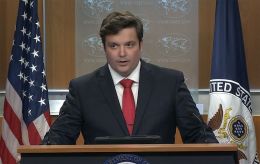Israel, Karabakh, Ukraine: Where in the world could a new conflict erupt
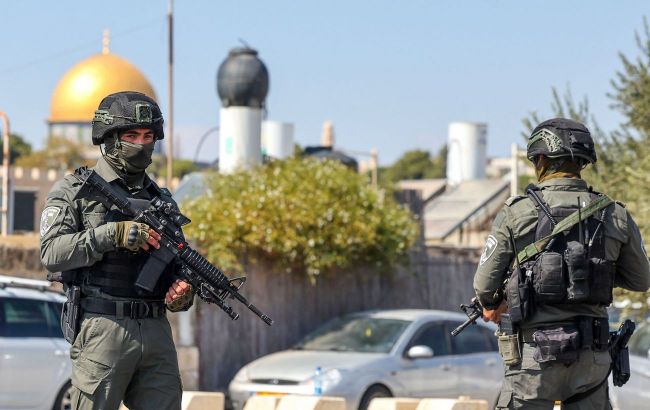 The war in Israel may not be the last conflict in the world (photo: Getty Images)
The war in Israel may not be the last conflict in the world (photo: Getty Images)
There are many regional conflicts in the world, some of which are either in a hot phase of the war, such as Russia's aggression against Ukraine, or frozen like those powder kegs just waiting for a spark to ignite. Where are these hotspots on the planet, what has caused their emergence, and can they escalate into new wars?
To prepare this material, statements by the leader of China, Xi Jinping, and the President of the United States, Joe Biden, were used, as well as articles from Wikipedia, a report from U.S. intelligence, publications from Reuters, Politico, and an exclusive comment from Yurii Poita, the Head of the Asia-Pacific Section at the Center for Army, Conversion and Disarmament Studies.
Against the backdrop of a full-scale war in Ukraine, there has been a sudden escalation of yet another, even older conflict between Israel and the Palestinians in the Middle East. This conflict has been ongoing since the mid-20th century, but it flared up with renewed intensity this October.
Sometimes conflicts that were considered eternal can suddenly be resolved. A prominent example is Nagorno-Karabakh. Azerbaijan and Armenia had been at war over this region since 1991, but last September, the dispute was effectively settled just a few days after the capitulation of the unrecognized Nagorno-Karabakh under pressure from the Azerbaijani army. However, there is a risk that Baku will not stop there. Recently, U.S. Secretary of State Antony Blinken warned that Azerbaijan may invade Armenia in the coming weeks.
The Karabakh conflict is just one of the conflicts in the post-Soviet space that Russia has artificially supported and exacerbated for many years. Other examples include the Transnistrian issue in Moldova and the Russian-occupied South Ossetia and Abkhazia regions in Georgia, which are still waiting for their resolution. However, such conflicts can be found in other parts of the world as well.
RBC-Ukraine has decided to compile a list of other conflicts that could potentially erupt in the near future.
China vs. Taiwan
In the 1920s, China experienced a civil war between the government of the Kuomintang party and the forces of the Communist Party. The result of this conflict was the defeat of the Kuomintang government and the escape of its leader, Chiang Kai-shek, along with his supporters to the island of Taiwan. There, Chiang Kai-shek established an exiled Chinese government and named the island the Republic of China. Initially, Taiwan was authoritarian, but over time, it transformed into a democracy.
In the beginning, many Western countries considered Taiwan to be the legitimate Chinese government. It even held a seat in the United Nations Security Council. However, in the 1970s, some UN member states began to argue that Taiwan could not represent the hundreds of millions of people living on the mainland of China.
In 1971, Taiwan's place in the UN Security Council was taken by Beijing. Eight years later, the United States established diplomatic relations with communist China, which led to a change in the world's attitude toward Taiwan. Since then, the number of countries officially recognizing Taiwan began to decrease rapidly. Currently, only 15 countries recognize Taiwan's independence, and Ukraine is not among them.
China claims Taiwan as its own, but in the 1980s, Beijing proposed a "one country, two systems" model for Taiwan, which would grant the island autonomy in the event of reunification with mainland China. This is the same model that was applied when China took control of Hong Kong and Macao. However, Taiwan rejected this proposal. In 2000, Taiwan's newly elected president from the Democratic Progressive Party advocated for the declaration of a separate state.
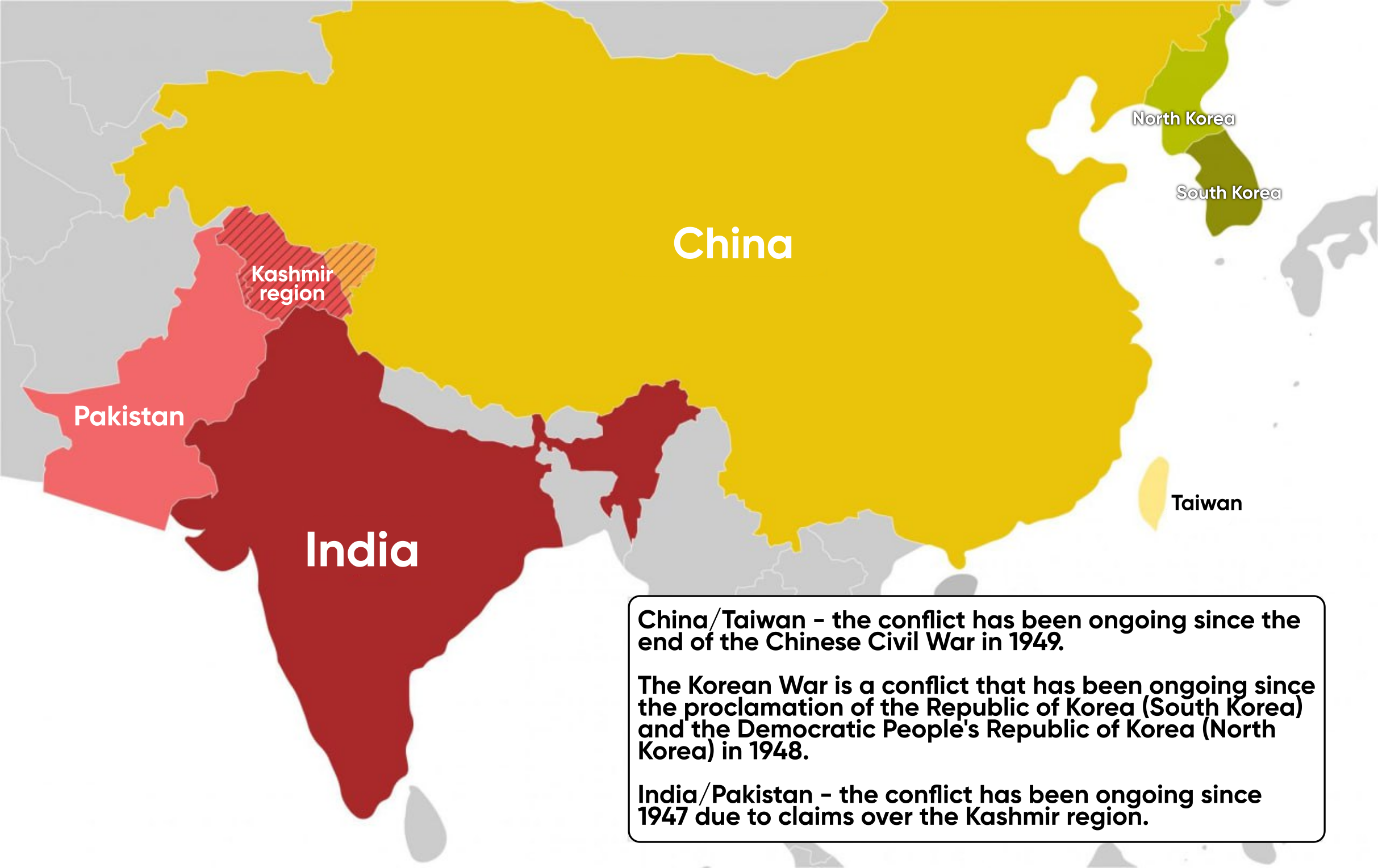 Conflicts in Asia (Photo: collage by RBC-Ukraine)
Conflicts in Asia (Photo: collage by RBC-Ukraine)
With changes in leadership came changes in Taiwan's stance toward China. Some sought to improve relations with Beijing through economic ties, while others resisted rapprochement. Today, Taiwan is led by President Tsai Ing-wen, a member of the Progressive Democratic Party, who advocates for Taiwan's independence.
China does not support Taiwan's aspirations for independence. In 2005, Beijing passed an anti-secession law, which allowed the use of non-peaceful means against Taiwan if it attempted to break away. Today, China's rhetoric regarding the reunification of Taiwan has become more forceful.
China's current leader, Xi Jinping, has repeatedly emphasized the historical necessity and people's desire to reunify Taiwan with the mainland, asserting that no force can stop this. In May of this year, U.S. intelligence indicated that China was preparing for war. However, the intelligence community believes that Beijing currently prefers a peaceful reunification with Taiwan.
Last year, China conducted large-scale military exercises around Taiwan, which were seen as rehearsals for a Chinese intervention, involving the isolation of the island, missile simulations, and amphibious landings. All signs pointed to China genuinely preparing for war. Presumably, this move is intended to deter the U.S. from taking a strong stance on Taiwan.
The United States is Taiwan's primary ally, even though it officially does not recognize Taiwan and publicly adheres to the One China policy. This status quo suits both Taiwan and the United States, as it allows them to maintain relations and economic cooperation without damaging their relations with Beijing.
However, as Beijing's rhetoric regarding Taiwan becomes more aggressive, the U.S. response becomes sharper. President Joe Biden did not rule out the possibility of U.S. troops defending Taiwan in the event of a Chinese attack, despite previous denials of a shift in U.S. policy toward Taiwan.

The conflict between China and Taiwan has been ongoing since 1949 (Photo: Getty Images)
Currently, according to Yurii Poita, everything points to China preparing for war. It is estimated that China will achieve the necessary military capability by 2027.
Taiwan is not standing idly and is preparing for defense, with support from the United States. In August of this year, President Biden approved an $80 million arms sale to Taiwan to strengthen its self-defense capabilities. In September, Taiwan launched its first indigenous submarine, with plans to build another by 2027.
However, even with U.S. support and an army of 165,000 personnel, Taiwan is unlikely to match China's army of over two million. According to Poita, there are four possible scenarios for a war between China and Taiwan: blockade of the island by Chinese forces, forcing Taiwan's surrender through missile strikes, air operations, or landing on the island with the occupation of Taipei and the entire island.
The choice of scenario is known only to China's military and political leadership. While the U.S. is increasing its presence in the region and sending ambiguous signals to China, Beijing could potentially deter the U.S. from direct involvement in a conflict with Taiwan through nuclear deterrence. The actual development of events is difficult to predict today, concluded the expert.
Korean War: 38th parallel
During World War II, the Allies liberated Korea from Japanese occupation and divided it similarly to Berlin. Thus, Korea was split into North Korea (occupied by the USSR) and South Korea (controlled by the United States). The border between the North and the South ran and still runs near the 38th parallel.
Initially, the USSR and the United States planned to unify Korea into one state by holding unified elections under the auspices of the United Nations. However, the Cold War had an impact on these plans, and the joint elections did not take place. With the support of the United States, elections did occur in the southern part in 1948. The newly elected President Syngman Rhee declared the establishment of the Korean Republic, which is commonly referred to as South Korea today.
The authority in North Korea belonged to the communists. In 1946, the Labor Party of Korea, led by Kim Il-sung, came to power, whose guerrilla units had fought against Japan as part of the Red Army. In 1948, a few weeks after the establishment of the Republic of Korea, the Korean People's Democratic Republic (KPDR), led by Kim Il-sung, was declared.

The war between the Koreas was initiated by the KPDR in 1950 (Photo: Getty Images)
After the United States and the USSR withdrew their forces from the Korean Peninsula, they paid less attention to Korea. The United States was preoccupied with containing the spread of communism to the east, while the USSR was involved in the civil war in China. During this time, Kim Il-sung prepared to conquer the South.
In June 1950, North Korea, with the support of the USSR, crossed the 38th parallel and invaded the South. On the same day, the UN Security Council voted for a military mission led by the United States. Later, the USSR and communist China also became involved in the war. The Korean War lasted until July 1953. The result of the war was not the reunification of Korea, and both states remained within their pre-war borders. Essentially, the conflict was frozen.
A few years after the war ended, the KPDR decided to obtain its own nuclear weapons, with assistance from the USSR and China. In 2005, North Koreans publicly declared that they had obtained a nuclear weapon, and in 2015, the KPDR conducted nuclear tests that were felt worldwide as the bomb detonation caused an earthquake.
Although the KPDR's military today lags behind that of South Korea, the availability of nuclear weapons in Pyongyang poses a threat to the world. North Korea allegedly tests its missiles by launching them toward Japan, and no one knows when such a missile might not be just for practice.
During Donald Trump's presidency, the United States attempted to de-escalate relations with Pyongyang. Trump even visited North Korea (the first time in U.S. history) and tried to negotiate with Kim Jong-un for the denuclearization of North Korea in exchange for lifting sanctions. However, no concrete agreement was reached, and the situation continues to escalate.
Nuclear standoff
Another regional conflict that could lead to a nuclear war is the standoff between India and Pakistan. It has been ongoing since their independence from colonial Britain. The independence movement from the British was led by two organizations, the Indian National Congress and the Muslim League. However, the conflict between their leaders later led to a split, resulting in the division of British India into two states - India and Pakistan.
After leaving the region in 1947, Britain left behind 565 princely states, which had the choice to remain independent or join India or Pakistan. Most of the princely states became part of India or Pakistan, depending on their location and dominant religion. However, one of the princely states became the center of the ongoing standoff, which continues to this day. That state is Kashmir.
The majority of Kashmir's population were Muslims, but the ruler of the princely state was Hindu Maharaja Hari Singh. He did not choose to join either country and delayed the decision as much as possible. This led to a rebellion and an invasion by Pashtuns from Pakistan into Kashmir. As a result, Singh requested military assistance from India, and in response, Pakistan sent its troops into Kashmir. This marked the beginning of the first Indo-Pakistani war in 1947. It lasted until January 1, 1949, when a ceasefire line was established under the auspices of the United Nations. As a result, India received 60% of the disputed region's territory.
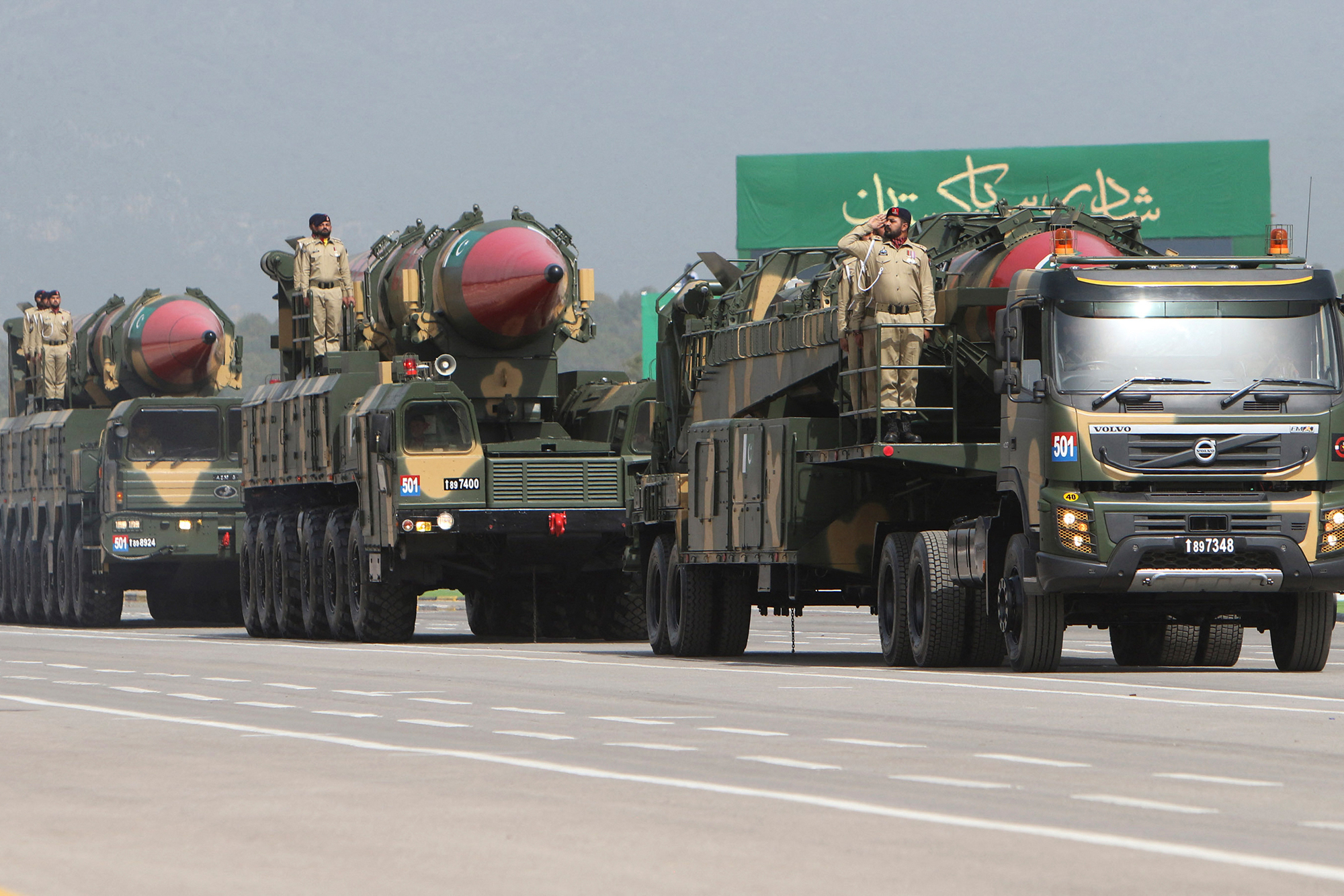
The conflict between India and Pakistan became even more dangerous after they acquired nukes (Photo: Getty Images)
Located at the intersection of India, Pakistan, and China, the Kashmir region was a coveted piece not only for New Delhi and Islamabad. In 1962, China initiated a war with India over Kashmir and gained control over the Aksai Chin region (which constitutes 20% of the territory) as a result. India still claims that territory.
There were several phases of confrontation between India and Pakistan, but the conflict took on a new dimension in the late '90s. In 1998, India and Pakistan conducted successful nuclear tests, and the following year, a new standoff erupted between the countries - the Kargil War. In the spring of 1999, Pakistani militants seized several Indian border posts, prompting India to launch a military operation in response. However, this confrontation did not escalate into a nuclear conflict, especially since Pakistan officially denied its involvement in the attack by militants.
In May 2018, India and Pakistan agreed to avoid exchanging artillery fire in Kashmir, but sporadic escalations still occur between the two countries. For example, in February 2019, the Indian Air Force struck a militant camp belonging to Jaish-e-Mohammed in the Pakistani-administered part of Kashmir in response to the killing of several dozen of its soldiers. Pakistan retaliated with an airstrike in the Indian-administered part of the region. In 2021, the parties once again reached a ceasefire agreement.
In March of this year, the U.S. intelligence community expressed concern in its annual report about the possibility of a new war between New Delhi and Islamabad in the event of imaginary or real provocation. Intelligence believes that in the event of an attack by Pakistan-backed militants operating in Kashmir, the Indian government led by Narendra Modi could respond with force.
Powder keg in Europe
The disintegration of Yugoslavia was accompanied by a series of wars among the countries that were part of it. A series of conflicts in the Balkans that lasted for more than 10 years led to the creation of six internationally recognized states and one partially recognized. However, the echoes of these conflicts still pose problems in the region.
Last year, in the midst of a full-scale war in Ukraine, another conflict nearly erupted in the Balkans. Last summer, protests by the Serbian population in the partially recognized Kosovo erupted due to fines for using Serbian license plates. To suppress the protests, the authorities in Kosovo deployed the police and special forces, which triggered a strong reaction from Serbia, to which the region belonged before its declaration of independence.
Belgrade and Pristina were on the brink of war. Kosovo deployed special forces in border towns, while Serbia moved troops and artillery to the border. NATO was even prepared to involve its peacekeepers, but conflict escalation was avoided through EU mediation, and the countries reached agreements through dialogue on the contentious issue.
.png)
Conflicts in the Balkans (Photo: collage by RBC-Ukraine)
In the spring of 2023, escalation between Pristina and Belgrade occurred after interim elections in the northern municipalities of Kosovo, in which Albanians won because the Serbian population ignored the vote. This led to mass unrest and clashes with the police. At the same time, Serbia began moving troops to the Kosovo border. NATO once again intervened, sending additional peacekeepers to the region.
This fall, the situation in Kosovo escalated again when armed individuals seized a monastery on the border with Serbia at the end of September. As a result of a special operation carried out by Kosovar security forces, four people were killed, including a law enforcement officer and three Serbs. Belgrade and Pristina immediately exchanged accusations, and Serbia began mobilizing its army once more.
According to the United States, after this escalation, Serbia deployed modern tanks and artillery near Kosovo, as stated by White House National Security Council spokesperson John Kirby. Belgrade, on its part, denied such allegations.
The conflict between Serbs and Albanians over Kosovo has been ongoing for a long time. Kosovo is an integral part of Serbian national identity. The Battle of Kosovo in the 14th century against the Ottoman Empire is one of the key state-forming myths for Serbia. During the time of the Ottoman Empire, the Kosovo territory was predominantly inhabited by Albanians, but in 1912, during the Balkan Wars, Serbia reclaimed the region. The return of Kosovo was accompanied by mass killings of Albanians and the resettlement of Serbs. During World War II, Albanians organized mass ethnic cleansing in Kosovo.
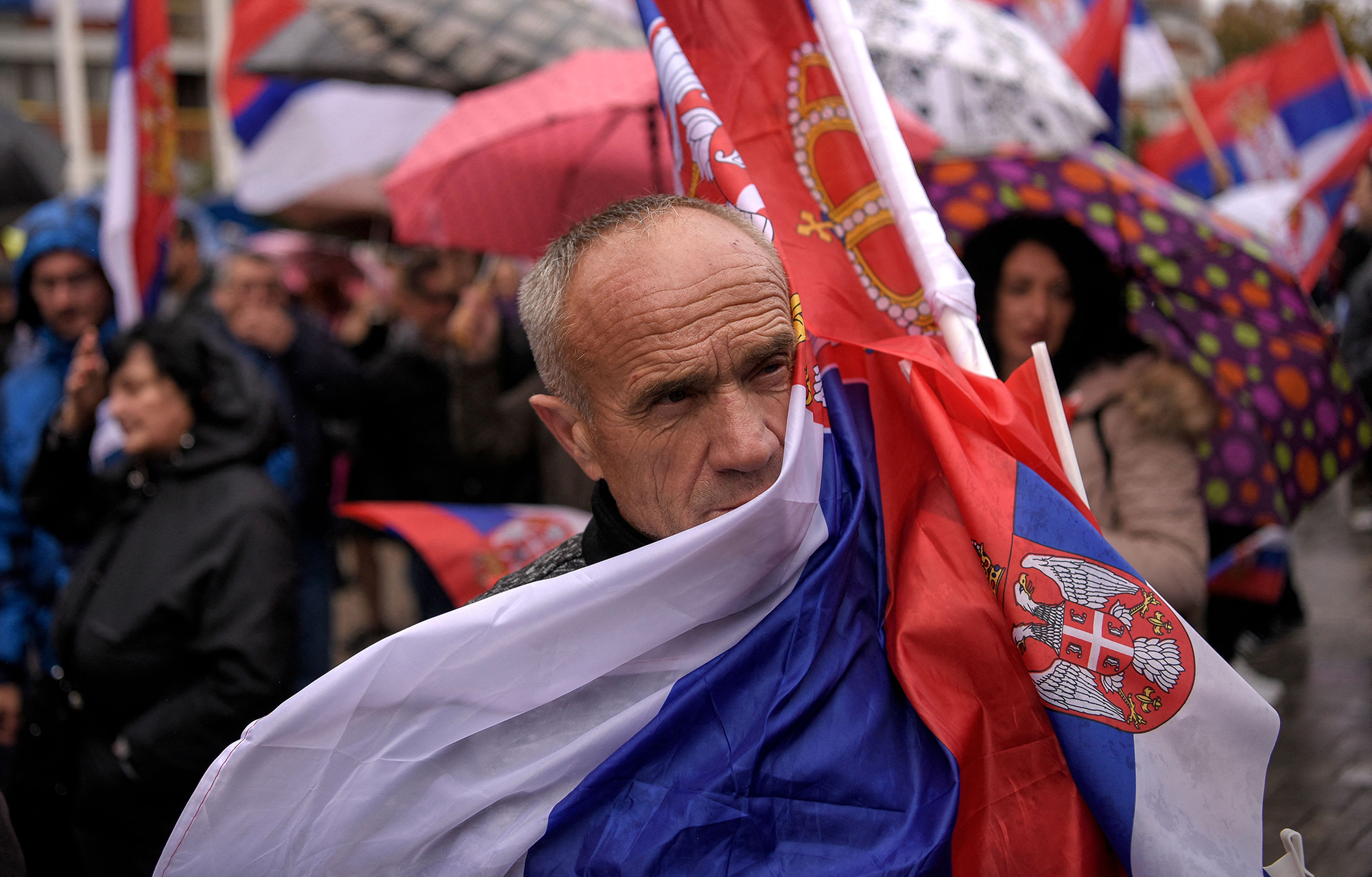
The relationship between Kosovo and Serbia is constantly deteriorating (Photo: Getty Images)
During the time of Yugoslavia, Kosovo had limited autonomy. Initially, Yugoslavia pursued a policy of Albanization in Kosovo, hoping to eventually annex it to Albania. By the late 1980s, Kosovo's autonomy was effectively abolished, and Albanization was replaced by Serbization. In 1992, Kosovo became a part of Serbia, but Kosovo Albanians sought independence, which in 1996 escalated into a war accompanied by mass ethnic cleansing.
Due to the ethnic cleansing, NATO intervened in the conflict, declaring a peacekeeping mission that is remembered for the widespread bombing of Yugoslavia (which at the time included only Serbia and Montenegro). As a result, in 1999, NATO forced Serbian-Yugoslav forces to withdraw from Kosovo, and the region came under UN control. In February 2008, Kosovo Albanians unilaterally declared independence of Kosovo. However, only 101 UN member states recognized the newly created country. Ukraine is not among them, nor is Serbia.
Bosnian War: Everyone against everyone
Another explosive point in the Balkans is Bosnia and Herzegovina (BiH). In March 2023, the president of the Republika Srpska, which is part of Bosnia and Herzegovina, Milorad Dodik, threatened to declare independence after he was denied the appropriation of state property in the BiH region.
In August of this year, Dodik was charged with separatism, and the U.S. imposed personal sanctions on him. However, it is unlikely that this will stop Dodik, who has friendly relations with Moscow, from pursuing his goal of destabilizing the situation in BiH, which has remained unstable since the breakup of Yugoslavia.
Before the collapse of Yugoslavia, BiH was inhabited by several ethnic groups (Bosniaks, Serbs, and Croats), but none of them was a majority. In 1990, the three key nations in BiH formed three parties - Bosniak, Croatian, and Serbian - which received the most support in the first democratic parliamentary elections.
As a result, these three parties formed the Presidency, a collegial body led by the leader of the Bosniak party. The speaker of the parliament was a representative of the Serbs, and the prime minister was Croatian. However, this fragile unity did not last long. In October 1991, Bosniak and Croatian deputies supported a memorandum on sovereignty, against which Serbian parliamentarians declared the creation of their own parliament. After that, the Serbs held their own referendum, in which they decided not to separate from Yugoslavia, and in 1992, they proclaimed the Republic of Srpska within the territory of BiH.

NATO forces intervened in the war in Bosnia and Herzegovina (Photo: Getty Images)
Croats, fearing that Bosniaks would become the dominant nation, also declared their own state formation. But if the Serbs wanted to join Yugoslavia, the Croats advocated for the independence of BiH, but in the form of a confederation. However, later, due to political ambitions, Croatian leaders in BiH began to consider their own independence or join independent Croatia.
Internal tension escalated into war. In the spring of 1992, Serbs, together with the Yugoslav army, began a siege of the Bosnian capital, Sarajevo, which lasted for four years with the aim of quickly taking over the entire territory of BiH. At the same time, battles raged between Croats and Bosniaks for the city of Mostar. In general, all of BiH was engulfed in conflicts accompanied by ethnic cleansing, the most famous of which is the Srebrenica massacre, in which Serbs killed 8,000 Bosnian men and boys.
Finally, NATO intervened in the situation. In August 1995, NATO aviation began bombing Serbian positions around Sarajevo, which lasted for about two weeks. After this, Operation Storm took place in Croatia, which led to the signing of the Dayton Peace Agreement by Serbia. As a result, BiH was divided into the Federation of Bosnia and Herzegovina and the Republika Srpska in a ratio of 51 to 49 percent. However, BiH remained one state.
However, this peace is difficult to call stable, as Bosnian Serbs have not abandoned their desire to join Serbia, and in recent years, separatist sentiments in the Republika Srpska have only strengthened.
Civil war in Syria
The civil war in Syria, which began in 2012 and has remained unresolved to this day, has led to the division of the country. Currently, two-thirds of Syria's territory is controlled by the forces of the Bashar al-Assad regime, supported by Russia and Iran. Another quarter of the country is under the control of the Syrian Democratic Forces (SDF), primarily Kurdish forces supported by the United States.
Rebel groups associated with Turkiye control the northwest of Syria, and in the Syrian province of Idlib, a coalition of rebels and militants, including jihadists from the Hayat Tahrir al-Sham group linked to Al-Qaeda, still exists. Turkish forces are also present in this region.
.png)
The situation in Syria (Photo: collage by RBC-Ukraine)
The United States, along with an international coalition it leads, engaged in fighting the Islamic State in Syria. The U.S. still maintains a military base in al-Tanf near the Iraq border. Russian military units that assisted Assad in the conflict are also present on Syrian territory.
Today, the war in Syria is essentially frozen as the conflicting parties find themselves at an impasse. Any further progress by the Assad regime could lead to clashes between Turkiye and Russia in the north or between Russia, the United States, and Turkiye in the east. Therefore, the options for the parties to the conflict are limited: negotiate or freeze the situation for years. For now, they seem to be leaning toward the latter, engaging in unproductive peace talks.
***
The world is filled with conflicts that can erupt at any moment, but no one can predict when the next fire will ignite. However, China and Taiwan are likely the closest to a new war, the consequences of which are difficult to foresee. As demonstrated by past experience, the international community lacks effective mechanisms to prevent such conflicts, especially when nuclear-armed states and members of the UN Security Council are involved.
